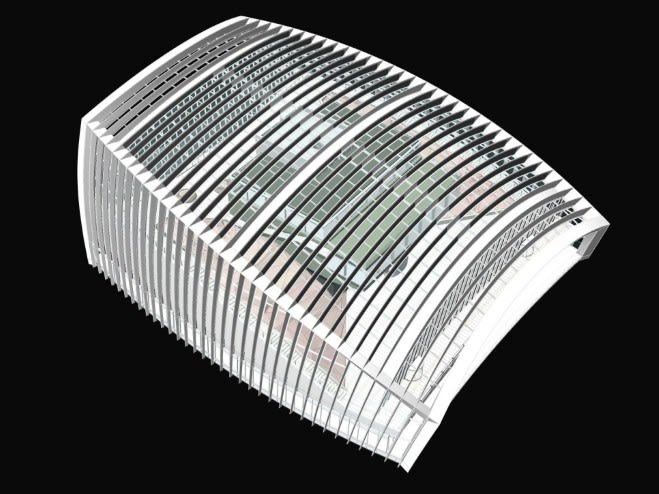- Client: Canary Wharf Group and Land Securities
- Lead Contractor: Canary Wharf Group Contractors
- BIM Tools: Revit and CATIA, a French CAD/CAM software suite
When the design of 20 Fenchurch Street began in 2010, BIM was not regularly utilised on all major schemes. However, it proved to be an essential tool for the design and construction of one of London’s most high-profile buildings.
Nicknamed the “Walkie Talkie” due to its unique “top heavy” shape, the form of 20 Fenchurch Street was conceived to provide the developers with 60% more lettable office space on the 34th floor than the 4th.
This design principle combined with the fact that the north and south facades are concave, while the east and west facades are convex with no two floor plates in the building the same, meaning that the structure of this tower was far more complex than that of a conventional skyscraper.
The architect was Rafael Viñoly Architects, supported by executive architect Adamson Associates, the same firm that supported Renzo Piano on the Shard.
The unusual shape meant that BIM was an essential tool in designing and modelling 20 Fenchurch Street’s steelwork.

The unusual shape of 20 Fenchurch Street required 3D modelling
“BIM came into its own when trying to model the shape,” says Paul Walters, divisional director of CH2M Hill, the structural engineer on the project. “At the end of every week the architects and engineers uploaded our models to a central location. This model was then be exported into analytic software to test the structural capacity of the design. When the form was complete CH2M Hill provided [steelwork fabricator] William Hare with both 2D drawings and a copy of the Revit model to fabricate the building’s main steelwork.”
Curved steelwork also had to be fabricated to enclose the sky garden, a quasi-public space that occupies the top three floors of the building. This steel, which sits like a cap on top of the tower’s main frame was produced in Germany by Josef Gartner, part of the Permasteelisa Group.

Curved steelwork (above) also had to be fabricated to enclose the sky garden (below)

“The sky garden is three dimensional using totally bespoke and curved steel sections,” explains Derek Hill, commercial manager of Josef Gartner. “Every steel section is also unique in length, curvature, and twists at different angles. This could only have been designed using advanced 3D software.”
Along with the design and clash analysis, the construction timeline was also modelled with BIM. Timings for the construction of the core, erection of the structural steel, installation of cladding and fit out, were all included on a 4D BIM model, which allowed contractor Canary Wharf Group to accurately plan the schedule for the entire build.
The way BIM was utilised on this project, now common on many buildings, demonstrates how far we have progressed since the design of 20 Fenchurch Street began in earnest in 2010 and this has not gone unnoticed by the people who worked on the building. “When we set out on this project four years ago we were pushing the boundaries, but now it is par for the course,” says Walters.
Every steel section is unique in length, curvature, and twists at different angles. This could only have been designed using advanced 3D software.– Derek Hill, commercial manager, Josef Gartner
Comments
Comments are closed.












Great project.